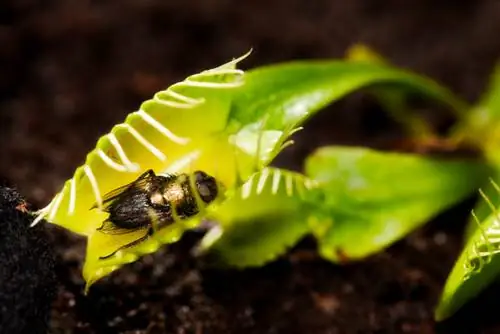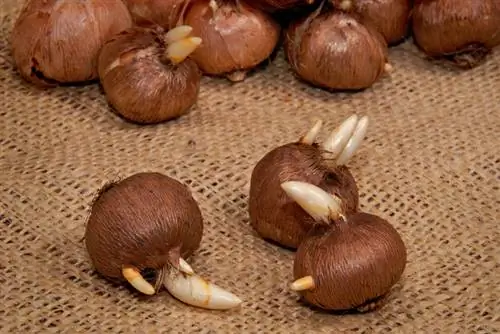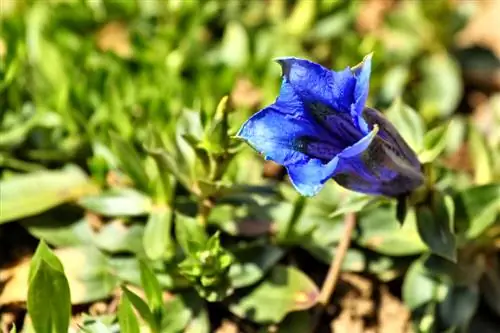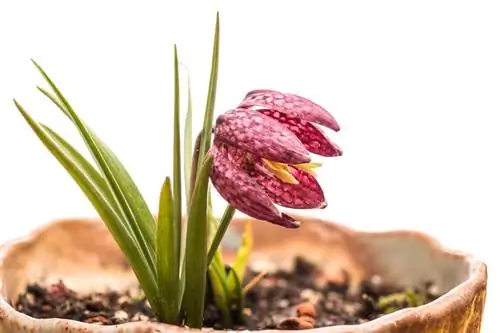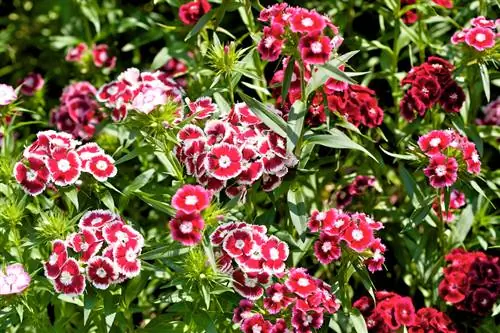- Author admin [email protected].
- Public 2023-12-16 16:46.
- Last modified 2025-01-23 11:20.
As fascinating as the breeding and keeping of carnivorous plants, also known as carnivores, is, these plants are not suitable for absolute gardening beginners. Some experience, time and, above all, a suitable location are required to ensure the correct care of these sometimes very exotic species.

How to properly care for carnivorous plants?
Carnivorous plants need a moist substrate, rainwater for watering, high humidity and bright locations. They should not be fertilized or fed. Regular repotting and disease or pest control are also important for successful care of these special plants.
Do all carnivorous plants need the same care?
The species also differ in their care requirements. If you are unsure, you should learn how to properly care for the species you keep.
Do carnivores need to be fed?
Feeding carnivorous plants is not necessary, in fact it is rather harmful. Carnivores get by with little nutrients, which they already get from the plant substrate. In addition, the insects found in the house that the plants themselves catch are completely sufficient.
If you still want to feed, enter:
- only living insects
- only one prey at a time
- don't feed animals that are too big
Is fertilizing carnivorous plants necessary?
Since there are enough nutrients in the planting substrate, fertilizing is not necessary. Although it is often advised to occasionally give diluted orchid fertilizer, this is unnecessary.
How are carnivores watered?
The plant substrate must never dry out completely. Place the pots with the carnivorous plants in saucers that you fill with water using the damming method.
If possible, never water carnivores directly from above, but only from below.
Can you water with regular tap water?
Normal tap water contains a lot of lime. Carnivores cannot tolerate lime at all. Therefore, if possible, only water with rainwater.
If you don't have rainwater available, you can use still mineral water as a substitute.
Distilled water is often recommended as a substitute. However, you should only give this water in an emergency. It does not contain any minerals that plants need for growth.
Do you need to increase the humidity?
For butterwort, normal humidity is usually sufficient. For all other species, the humidity should be at least 60 to 80 percent. By setting up water bowls, especially in winter, you can increase the amount of moisture in the air. Regularly spraying the plants with rainwater is also helpful.
Make sure that the high humidity does not cause mold to form in the room or on the plants.
Ventilate regularly, but remember that carnivores do not tolerate drafts well.
Do carnivorous plants need to be cut?
You don't have to cut carnivorous plants. However, it may make sense if you cut off inflorescences straight away for some species such as the Venus flytrap. Otherwise the plants have to put too much energy into flowering. This strength is missing for the development of safety gear.
You should also cut out diseased and rotten leaves.
When is repotting necessary?
Even if most species do not grow so quickly, it is recommended to repot carnivorous plants every year. The best time for this is early spring. The plants only need a larger pot if they protrude above the edge of the pot or if the roots have spread throughout the pot.
When transplanting, change the planting substrate as completely as possible. Carnivore soil decomposes very quickly. By repotting you also provide sufficient nutrients.
You can propagate many species of carnivores by dividing them. If you are repotting the plants anyway, it makes sense to take care of the propagation straight away.
What diseases and pests can occur?
Illnesses are not common. Care errors are almost always responsible for plants not thriving or even dying. This is especially true for waterlogging. Even though carnivores like it moist, the water has to be able to drain away. If waterlogged, roots and above-ground parts can rot.
If the catchers dry out or rot, it is often because the plants were fed incorrectly. The liquid contained in the traps must also never be poured out.
Pests such as aphids and spider mites occasionally appear. They should be collected as best as possible. Rinsing off the affected parts of the plant usually doesn't make sense. When keeping valuable species, you should use a special pesticide.
How do carnivorous plants overwinter properly?
Some species of sundews are hardy. However, most species of carnivorous plants cannot tolerate frost. They need to be kept indoors over the winter. Only if you have a very well-protected spot in the moorland can you try to overwinter some species of carnivores outside.
In winter, most carnivorous plants require lower temperatures and less moisture. It is often enough to provide the plants with a little moisture just once a month. However, the substrate must never dry out completely.
Tip
Most carnivores prefer bright, even sunny locations. Very few of the representative species can tolerate drafts. The plants can spend the summer in a protected place on the terrace.

